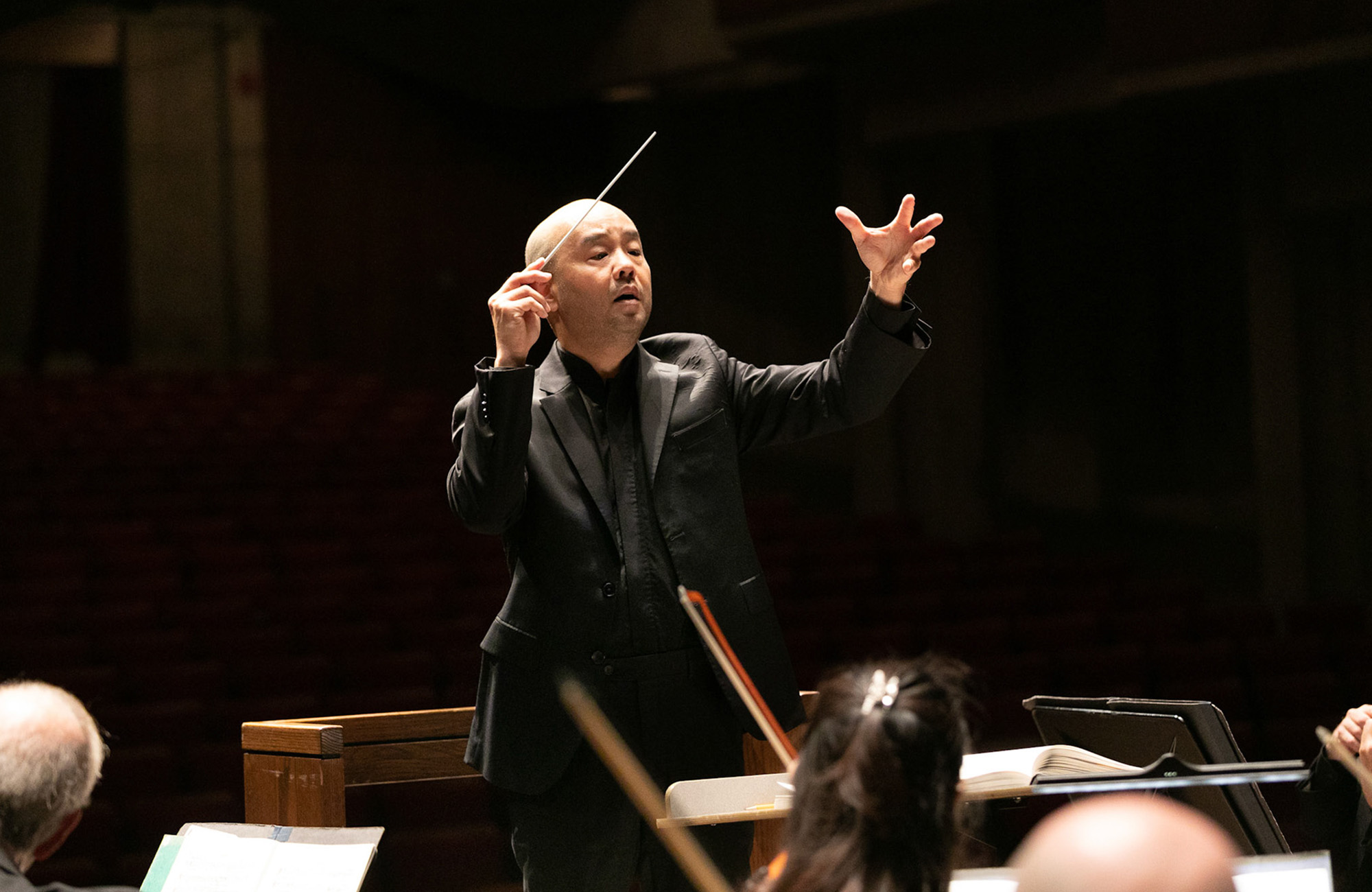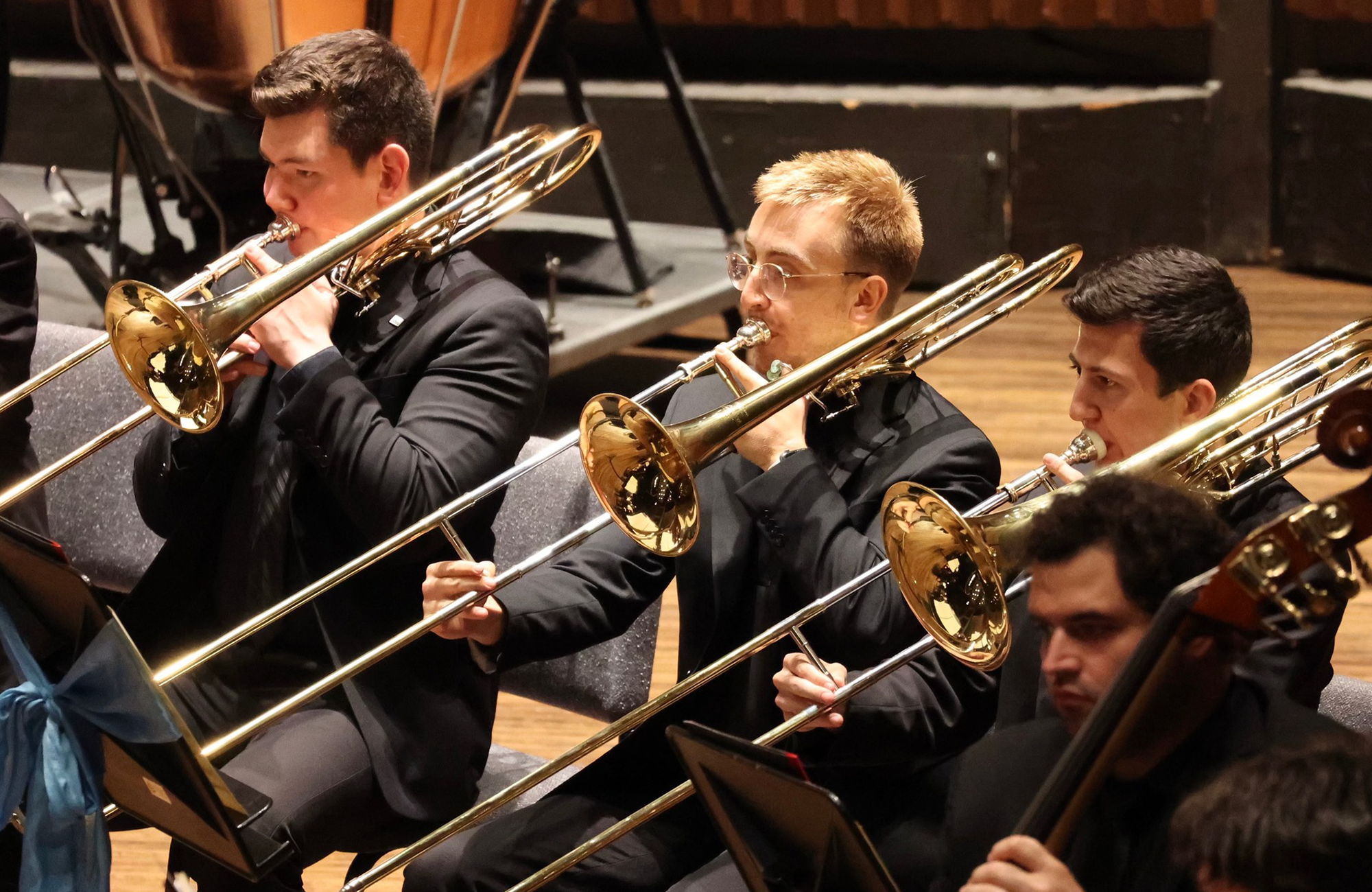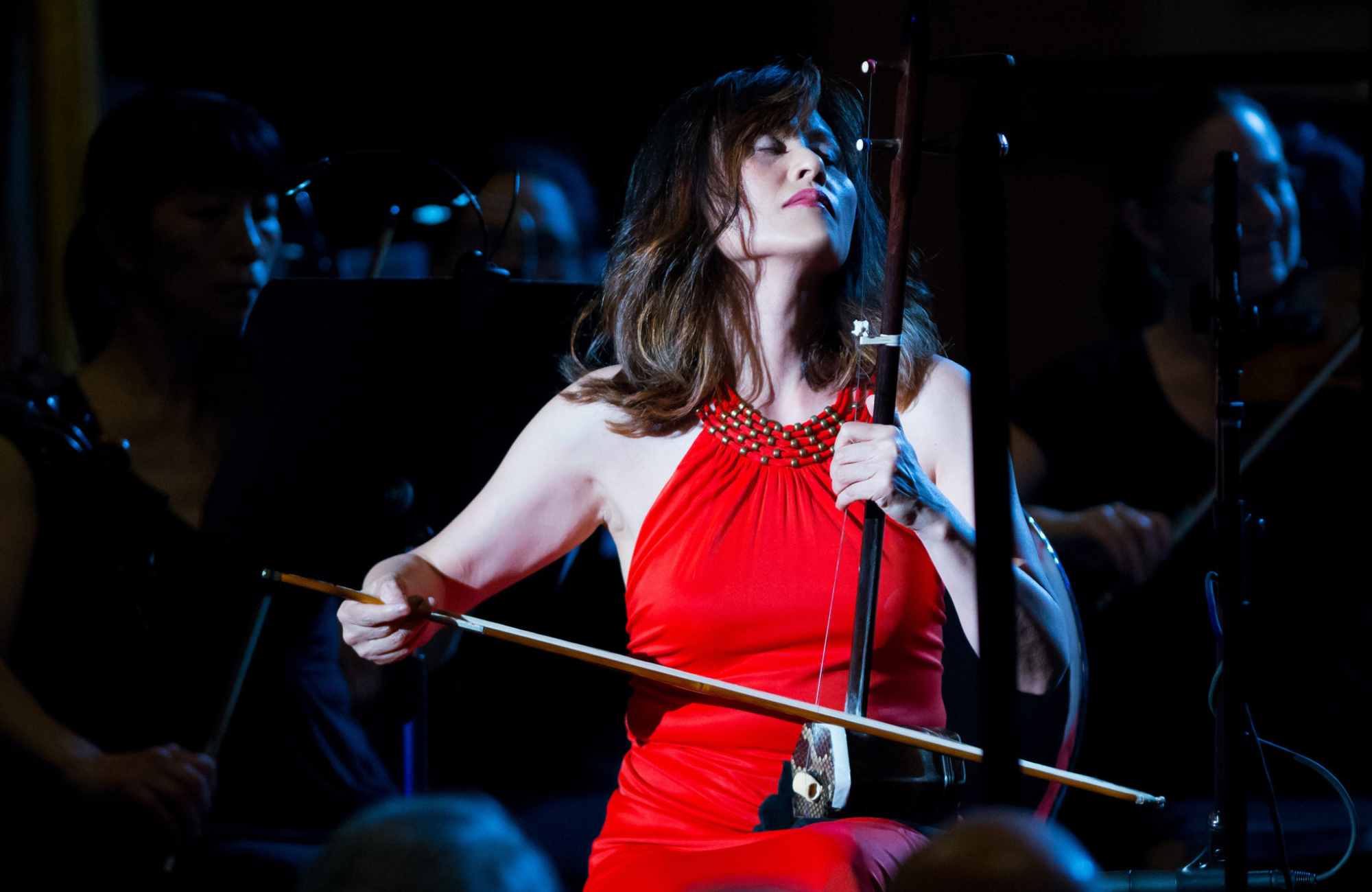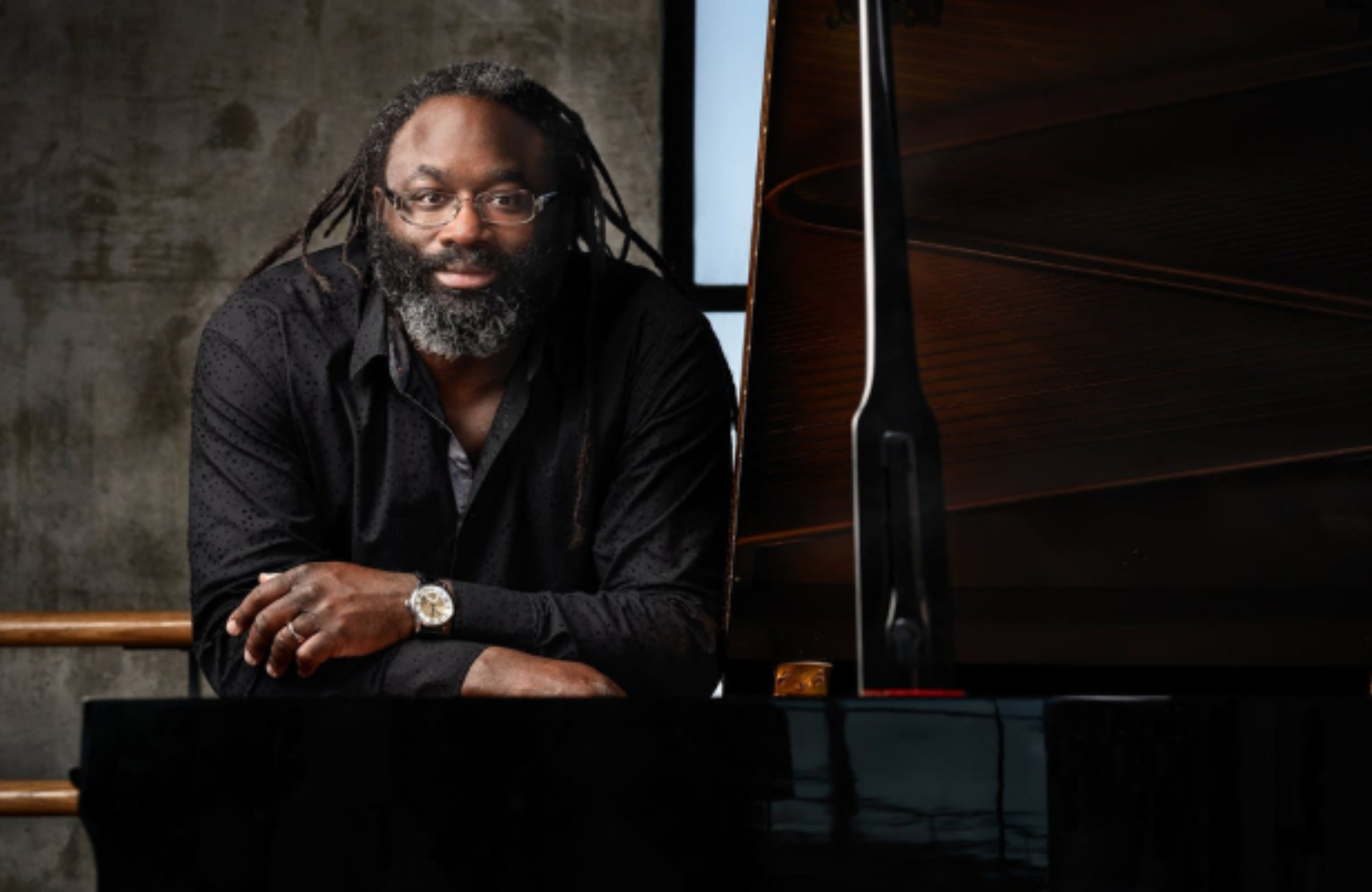Three pieces by arguably one of the most famous composers to live, Mozart, follow the span of his adult life: his Symphony No. 29 written at age 18, Maurerische Trauermusik, written at age 26, and the famed Requiem, which some say he wrote anticipating his own death in 1791 at age 35. The Syracuse University Oratorio Society joins The Syracuse Orchestra for this epic, all-Mozart concert.
PROGRAM
MOZART: Maurerische Trauermusik, K.477 (479a) ![]()
MOZART: Symphony No. 29 ![]()
MOZART: Requiem K. 626 ![]()
Thanks to our generous sponsors!
Harold L. Husovsky, MD & Susan E. Stred, MD
LARRY’S LISTENING RECOMMENDATIONS
PROGRAM NOTES
Wolfgang Amadeus Mozart (1756-1791) lived a short life—but the range of his style was nearly as great as the depth of his imagination, and tonight we juxtapose one of his brightest, most buoyant symphonies with two works that stand among his darkest and most profound.
The Symphony No. 29 (K. 201/186a, 1774), in the sunlit key of A major, may be the work of a teenager, but it’s a remarkably sophisticated one—and its sheer confidence may explain why it has become the most popular of Mozart’s early symphonies. Written in the ...
Wolfgang Amadeus Mozart (1756-1791) lived a short life—but the range of his style was nearly as great as the depth of his imagination, and tonight we juxtapose one of his brightest, most buoyant symphonies with two works that stand among his darkest and most profound.
The Symphony No. 29 (K. 201/186a, 1774), in the sunlit key of A major, may be the work of a teenager, but it’s a remarkably sophisticated one—and its sheer confidence may explain why it has become the most popular of Mozart’s early symphonies. Written in the wake of a trip to Vienna, where Mozart was energized by a strong jolt of new music, it shows the young composer fusing that exhilarating experience with his earlier influences to produce something original. Original—and arresting: the opening themes of both the first and last movements include striking octave leaps, and one can imagine the young composer flexing his muscles and challenging his imagination. He challenged his players, too. “It’s tremendously difficult for the orchestra,” says conductor Larry Loh, “with really high parts for the horns. There’s something about the sound of the high horn that gives it an exciting, on-the-edge feeling.”
If the Symphony No. 29 shows the young composer at his brightest, the Requiem shows Mozart at his darkest. Even the instrumentation is dark, with the elimination of flutes and horns, and the inclusion of basset horns (darker cousins of the clarinet), which, in Larry’s words, “add great color and depth to the winds.” It also reveals Mozart at his most serious and most dramatic, with elaborate Bach-inspired counterpoint and overwhelming choruses.
Mozart died before he could complete it. In fact, at tonight’s performance, Larry will take a brief pause after the last measure that Mozart composed, the eighth measure of the Lacrimosa—what Larry calls “one of the most poignant and expressive things he ever wrote.” Just as Tchaikovsky’s gloomy Sixth Symphony took on a rich mythology because he composed it right before his unexpected death, so the concurrence of Mozart’s unfinished Requiem and his own early death has encouraged all sorts of rumors about ghostly portents —and even persistent conspiracy theories that he was poisoned. (This mythology has been most memorably dramatized in Pushkin’s 1830 Mozart and Salieri and in Peter Shaffer’s play and film Amadeus.)
Granted, there is a strange story behind the work, but it centers more on plagiarism than on poison. In July 1791, Mozart was approached by a go-between for an anonymous donor who wanted to commission a Requiem. That donor was Count Franz von Walsegg, a wealthy amateur who had the habit of commissioning works from professional composers and passing them off as his own. In any case, Mozart was initially motivated to accept the job by the perennial need for cash rather than by any premonition of his death. In fact, while the Requiem project sat unfulfilled, Mozart, an inveterate multitasker, was also working on a number of other pieces, including the radiant Clarinet Concerto. If Mozart ever really felt that this was his own Requiem (as some sources have claimed), it was only toward the very end of his life, months after the piece had been commissioned.
Still, whatever the misleading mythology, Mozart’s death did bring up real editorial problems, first for his wife Constanze, then for modern performers. With the financial standing of his family increasingly desperate, Constanze had to find someone to finish the work. Eventually she settled on Mozart’s student and copyist, Franz Xaver Süssmayr (1766-1803). Had Mozart shared ideas about the unfinished portions of the Requiem with Süssmayr? We may never know, but in any case, Süssmayr rose to the occasion (surely, the only music by him in the repertoire is his contribution to this work). The sections he composed fit in well, and he had the judgment to end the piece by bringing back music from the beginning of the work, thus rounding out the Requiem with authentic Mozart. Over the years, dozens of others have tried their hand at more “scholarly” reconstructions, but none have really caught on. For most listeners, the Süssmayr edition is “the” Mozart Requiem, and that’s the one we’ll be hearing tonight.
What kind of performance can we expect? Larry thinks of himself primarily as an instrumentalist rather than a singer. Still, he first performed this piece as a high schooler, singing in a chorus during the summer (at a time when he was too young to appreciate its depth); and his first degree was in choral conducting. This background in choral music has affected the way he conducts. “I have always approached every instrument in the way I would approach the human voice, so it seems like something that is literally speaking. You need breath, you need accent, you need emphasis and context in the line to bring out some syllable or a word.” That’s true in orchestral music; it’s even truer in works for chorus and orchestra; and it’s especially true here, where Mozart has been so careful with his setting of the text. “I think of the orchestra as conveying the words the same way the chorus does. If we’re all thinking the same way, I hope that the words come alive with the orchestra in the same way that they do with the chorus.”
To open the concert, we have another somber work, the brief Masonic Funeral Music, K. 477, written in 1785. The Freemasons were, at various points during Mozart’s lifetime, either banned or closely regulated by the powers that be—but Mozart was a serious member, and numbered many other Masons among his close friends. His opera The Magic Flute is firmly grounded in Masonic beliefs and rituals, but he wrote a fair amount of other music influenced by their moral and spiritual principles, too, including this one.
The Funeral Music started out as a work for chorus and orchestra (now lost, although various musicians have tried to reconstruct it), re-emerging as an orchestral work for two oboes, clarinet, basset horn, two horns, and strings, and further revised into its current version, which adds two more basset horns and contrabassoon. For practical reasons, it’s often performed with the Requiem: once you’ve gathered up some basset horns, you might as well take advantage of them. But there are aesthetic reasons for pairing these pieces as well: although the Funeral Music doesn’t have the kind of Bach-inspired counterpoint we hear in the Requiem, the two works share a tonal darkness and a seriousness of purpose. Lasting around five minutes, the Funeral Music is a somber processional—based on a liturgical melody tied to a text from Lamentations of Jeremiah—with an introduction and a coda, thematically linked. Although anchored in C Minor, it ends with a comforting glow of C Major light, perhaps reflecting Mozart’s belief (as he put it in a letter to his father) in “the peace and consolation” of death. It makes a powerful introduction to the evening.
Peter J. Rabinowitz
Have any comments or questions? Please write to me at prabinowitz@SyracuseOrchestra.org
FEATURED ARTISTS
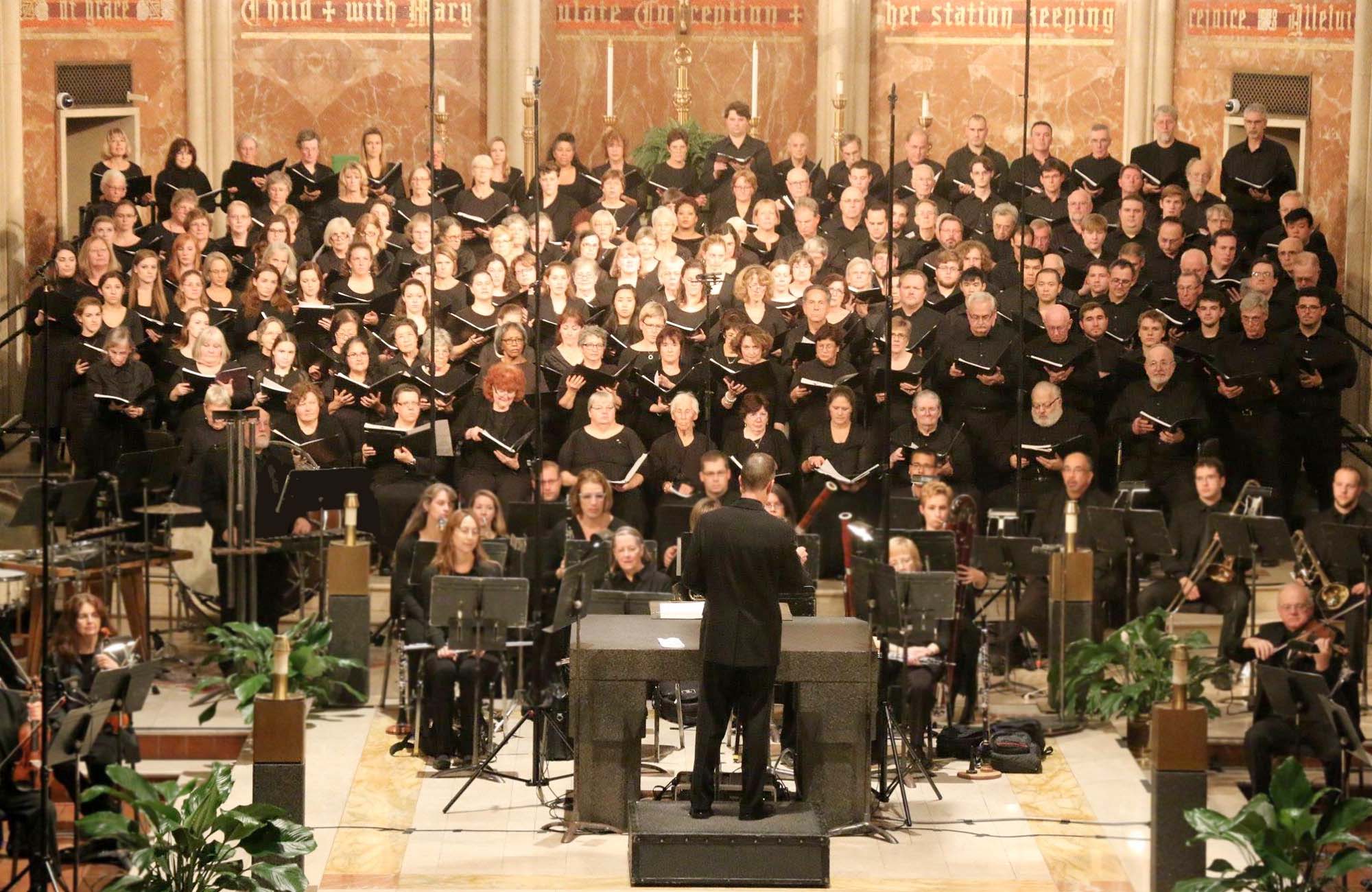
Founded in 1975, the Syracuse University Oratorio Society is a large chorus comprised of Syracuse University students and community members that regularly performs choral-orchestral masterworks with the Syracuse Orchestra. The Oratorio Society is directed by Dr. Wendy Moy.
Founded in 1975, the Syracuse University Oratorio Society is a large chorus comprised of Syracuse University students and community members that regularly performs choral-orchestral masterworks with the Syracuse Orchestra. The Oratorio Society is directed by Dr. Wendy Moy.
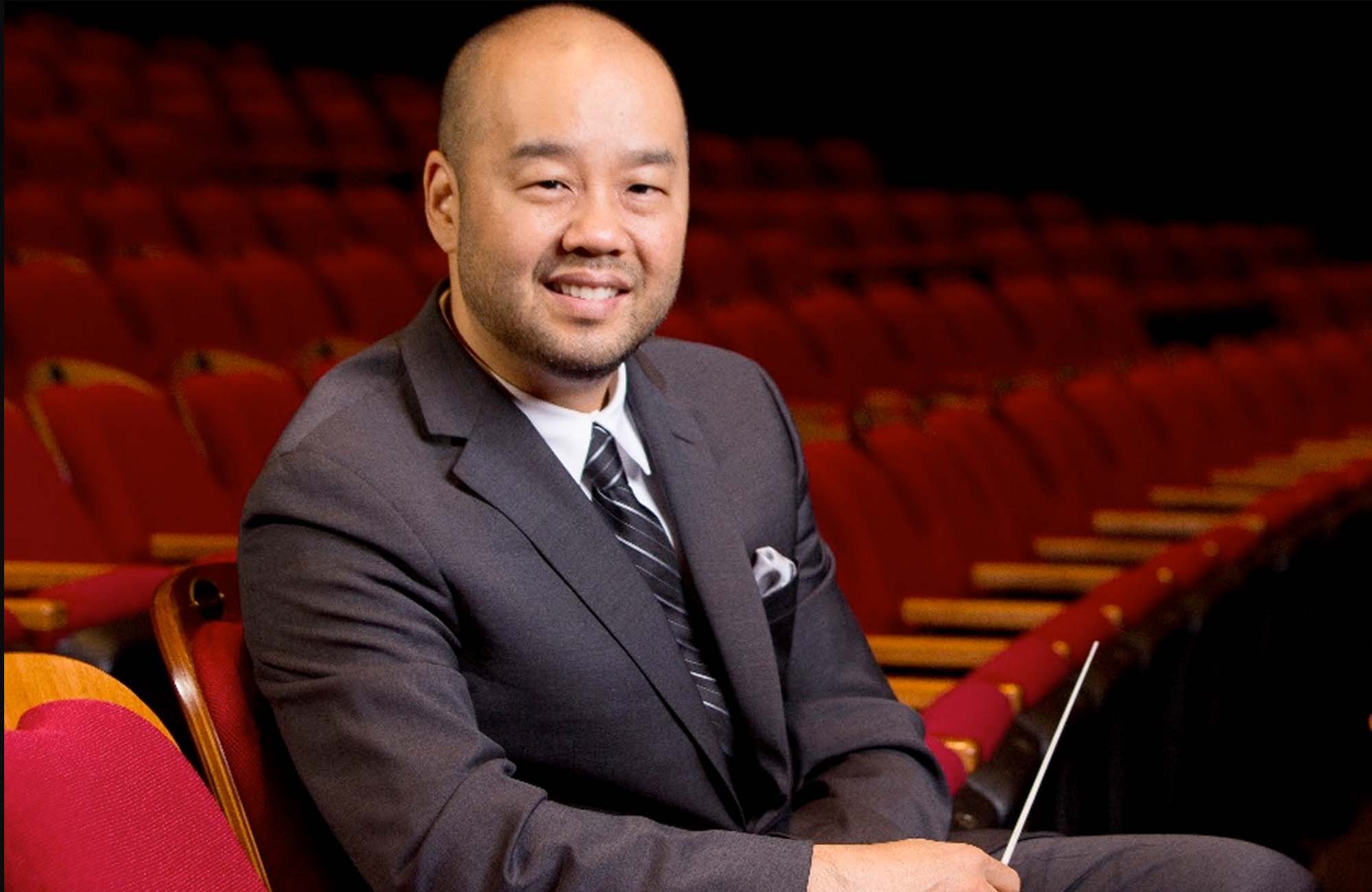
Described as bringing an “artisan storyteller’s sensitivity… shaping passages with clarity and power via beautifully sculpted dynamics… revealing orchestral character not seen or heard before” (Arts Knoxville) Lawrence Loh enjoys a dynamic career as a conductor of orchestras all over the world.
After an extensive two ...
Described as bringing an “artisan storyteller’s sensitivity… shaping passages with clarity and power via beautifully sculpted dynamics… revealing orchestral character not seen or heard before” (Arts Knoxville) Lawrence Loh enjoys a dynamic career as a conductor of orchestras all over the world.
After an extensive two year search, Lawrence Loh was recently named Music Director of the Waco Symphony Orchestra beginning in the Spring of 2024. Since 2015, he has served as Music Director of The Syracuse Orchestra (formerly called Symphoria), the successor to the Syracuse Symphony Orchestra. “The connection between the organization and its audience is one of the qualities that’s come to define Syracuse’s symphony as it wraps up its 10th season, a milestone that might have seemed impossible at the beginning,” (Syracuse.com) The Syracuse Orchestra and Lawrence Loh show that it is possible to create a “new, more sustainable artistic institution from the ground up.”
Appointed Assistant Conductor of the Pittsburgh Symphony in 2005, Mr Loh was quickly promoted to Associate and Resident Conductor within the first three years of working with the PSO. Always a favorite among Pittsburgh audiences, Loh returns frequently to his adopted city to conduct the PSO in a variety of concerts. Mr. Loh previously served as Music Director of the West Virginia Symphony Orchestra, Music Director of the Northeastern Pennsylvania Philharmonic, Artistic Director and Principal Conductor of the Syracuse Opera, Music Director of the Pittsburgh Youth Symphony Orchestra, Associate Conductor of the Dallas Symphony Orchestra, Associate Conductor of the Colorado Symphony Orchestra and Music Director of the Denver Young Artists Orchestra.
Mr. Loh’s recent guest conducting engagements include the San Francisco Symphony, Dallas Symphony, North Carolina Symphony, Baltimore Symphony, Sarasota Orchestra, Florida Orchestra, Pensacola Symphony, Atlanta Symphony, National Symphony, Detroit Symphony, San Diego Symphony, Seattle Symphony, National Symphony (D.C.), Utah Symphony, Rochester Philharmonic, Indianapolis Symphony, Calgary Philharmonic, Buffalo Philharmonic, Albany Symphony and the Cathedral Choral Society at the Washington National Cathedral. His summer appearances include the festivals of Grant Park, Boston University Tanglewood Institute, Tanglewood with the Boston Pops, Chautauqua, Sun Valley, Shippensburg, Bravo Vail Valley, the Kinhaven Music School and the Performing Arts Institute (PA).
As a self-described “Star Wars geek” and film music enthusiast, Loh has conducted numerous sold-out John Williams and film music tribute concerts. Part of his appeal is his ability to serve as both host and conductor. “It is his enthusiasm for Williams’ music and the films for which it was written that is Loh’s great strength in this program. A fan’s enthusiasm drives his performances in broad strokes and details and fills his speaking to the audience with irresistible appeal. He used no cue cards. One felt he could speak at filibuster length on Williams’ music.” (Pittsburgh Tribune)
Mr Loh has assisted John Williams on multiple occasions and has worked with a wide range of pops artists from Chris Botti and Ann Hampton Callaway to Jason Alexander and Idina Menzel. As one of the most requested conductors for conducting Films in Concert, Loh has led Black Panther, Star Wars (Episodes 4-6), Jaws, Nightmare Before Christmas, Jurassic Park, Casablanca, The Wizard of Oz and Singin’ in the Rain, among other film productions.
Lawrence Loh received his Artist Diploma in Orchestral Conducting from Yale, his Masters in Choral Conducting from Indiana University and his Bachelor of Arts from the University of Rochester. Lawrence Loh was born in southern California of Korean parentage and raised in Carlisle, Pennsylvania. He and his wife Jennifer have a son, Charlie, and a daughter, Hilary. Follow him on instagram @conductorlarryloh or Facebook at @lawrencelohconductor or visit his website, www.lawrenceloh.com
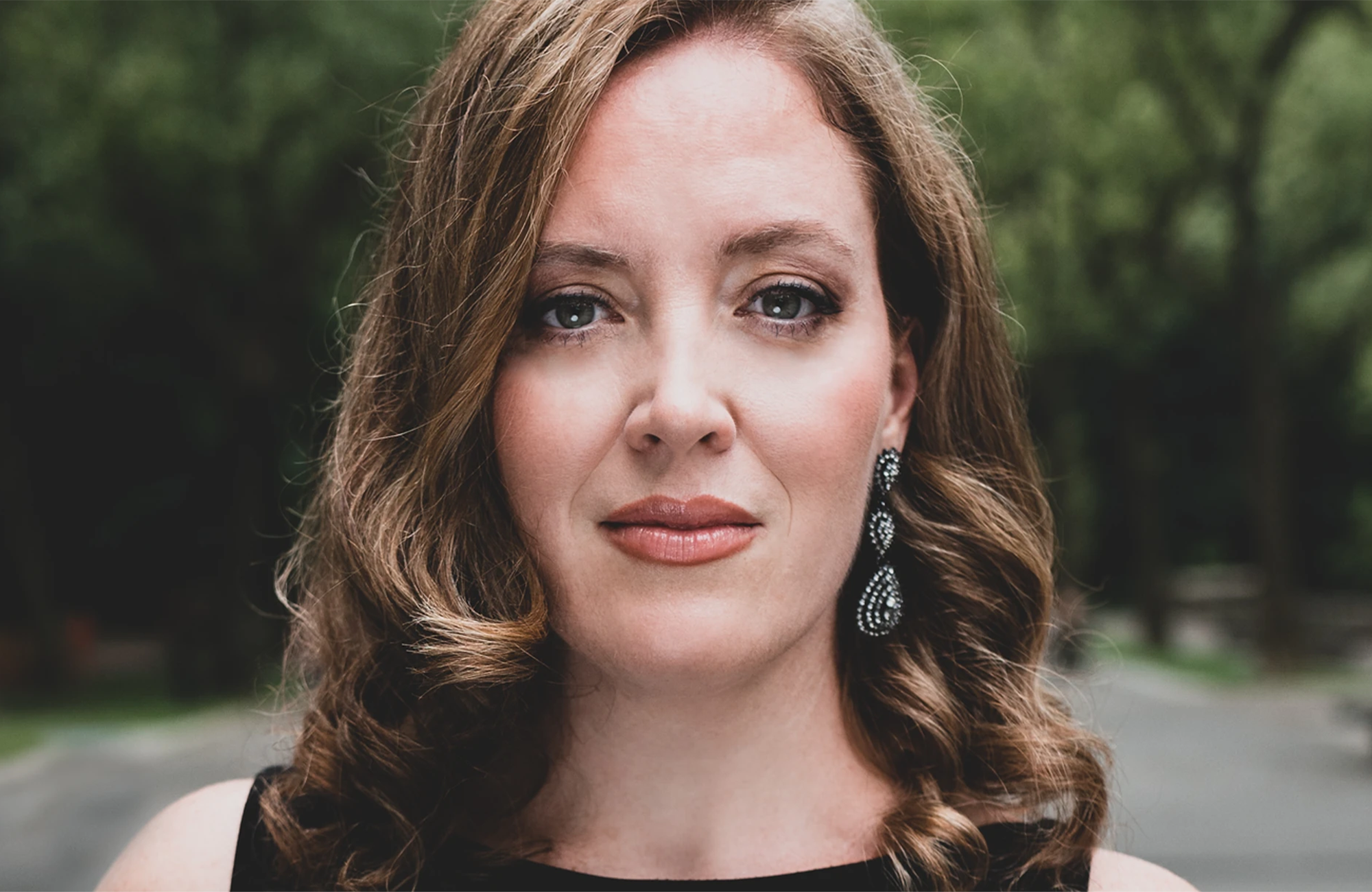
Katherine Whyte has delighted audiences and critics alike on opera and concert stages across her native Canada, the United States and Europe. Opera Today has praised her “keen artistic sensibility” while the San Francisco Classical Voice singled out “her glamorous, vibrato-rich voice”. Following her Metropolitan Opera debut in 2007 in ...
Katherine Whyte has delighted audiences and critics alike on opera and concert stages across her native Canada, the United States and Europe. Opera Today has praised her “keen artistic sensibility” while the San Francisco Classical Voice singled out “her glamorous, vibrato-rich voice”. Following her Metropolitan Opera debut in 2007 in Strauss’ Die Ägyptische Helena, she has returned to the company for productions of Iolanta, Rigoletto, Jenufa, The Gambler, The Enchanted Island, Two Boys, Parsifal, Don Giovanni, Così fan tutte, and Suor Angelica.
Recent and upcoming engagements for Ms. Whyte include her celebrated Countess Almaviva in Le nozze di Figaro with Intermountain Opera Bozeman; her debut with Syracuse’s Symphoria performing Poulenc’s Gloria; a return to New Choral Society as soprano soloist in Carmina Burana; a solo recital at Gordon College, her debut with Heartbeat Opera as Agathe in Der Freischütz; and Fiordiligi in Così fan tutte with Opera Grand Rapids.
The 2018-19 season for Ms. Whyte included Beethoven’s Ninth Symphony with the Louisiana Symphony, joining Opera Hong Kong as Donna Anna in Don Giovanni, Adina in L’elisir d’amore with Grand Junction Symphony Orchestra, and returning to The Metropolitan Opera for their production of Suor Angelica. The 2017-2018 season saw her back at The Metropolitan Opera for Parsifal as well as appearing in concert with the Mountain View International Festival of Song and the Orquesta Sinfonica Mineria for Beethoven’s Ninth Symphony. Additionally, she appeared with both Charlottesville Opera and the Norwalk Symphony as the Countess in Le nozze di Figaro. The 2016-2017 season included her return to The Metropolitan Opera for productions of Jenufa and Rigoletto, a debut with the Edmonton Symphony for Handel’s Messiah, Fauré’s Requiem with Manhattan Concert Productions at Carnegie Hall, and her debut with the Qingdao Symphony Orchestra in China. The 2015-2016 season saw her debut with the Dallas Opera as Pousette in Manon, a return to the Metropolitan Opera for their production of Rigoletto, the Countess in Le nozze di Figaro with Opera Saratoga, and concerts with the Kaohsiung Symphony Orchestra and the Orchestra of China’s National Opera at the Meet in Beijing Arts Festival.
Other notable operatic appearances include the title role of Iphigénie en Tauride and Iris in Semele with Canadian Opera Company, the Countess in Le nozze di Figaro with the Princeton Festival, her Vancouver Opera debut as Donna Anna in Don Giovanni, Gilda in Rigoletto with English National Opera, the Countess in Le nozze di Figaro with Virginia Opera and Opera Hamilton, Pamina in Die Zauberflöte with Michigan Opera Theatre, Euridice in Gluck’s Orfeo ed Euridice with Atlanta Opera, and Iphis in Handel’s Jephta with Opéra National de Bordeaux.
Ms. Whyte’s appearances on the concert stage include Beethoven’s Mass in C Major, Stravinsky’s Pulcinella, Mozart’s Requiem, and Handel’s Messiah with the Houston Symphony, Neilsen’s Symphony No. 3 with the San Francisco Symphony, Carmina burana and Beethoven’s Symphony No. 9 with the National Chorale, Beethoven’s Symphony No. 9 with the Arkansas Symphony Orchestra, Mozart’s Mass in C-minor with the Vancouver Symphony, Brahms’ Ein deutsches Requiem with the Orquesta Sinfónica Nacional de Costa Rica, Mendelssohn’s A Midsummer Night’s Dream with the Colorado Symphony, Handel’s Messiah with the National Symphony Orchestra, Beethoven’s Ninth Symphony with the Orquesta Sinfonica Nacional, Mozart’s Requiem with the Alabama Symphony Orchestra, and Handel’s Messiah with the New Choral Society. The winner of the 2007 Alice Tully Recital Competition, Ms. Whyte made her Carnegie Hall debut in Solo recital at Weill Hall in 2008.
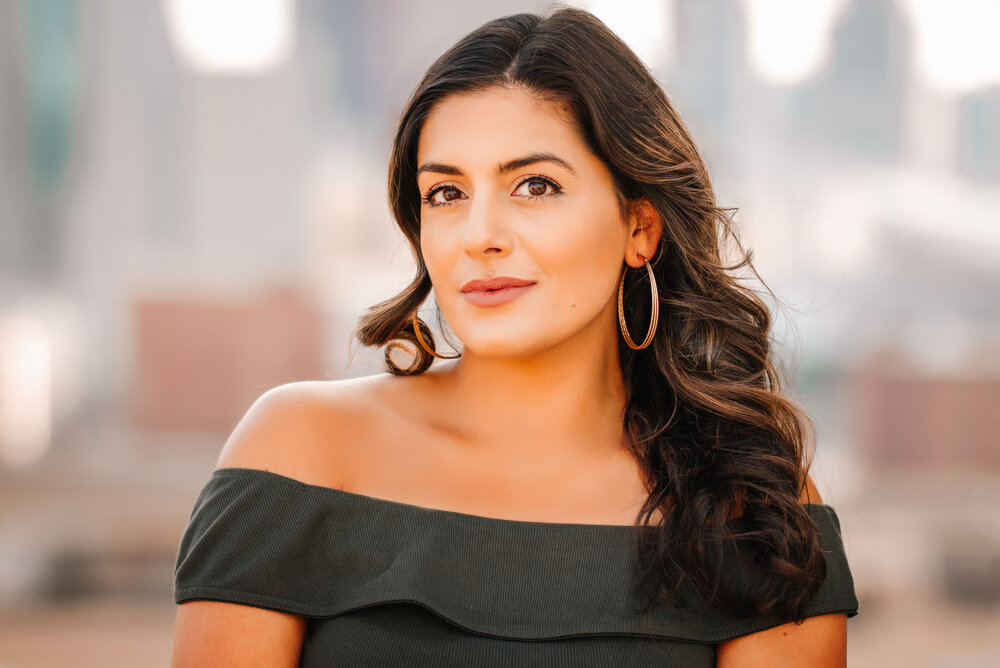
Laurel Semerdjian, an American mezzo-soprano of Armenian descent, has recently been hailed as “a dramatic and musical tour de force” (Pittsburgh Tribune) for her portrayal of Asakir in Pittsburgh Opera’s production of Mohammed Fairouz’s Sumeida’s Song. Her voice has been praised for its “guttural low notes” (...
Laurel Semerdjian, an American mezzo-soprano of Armenian descent, has recently been hailed as “a dramatic and musical tour de force” (Pittsburgh Tribune) for her portrayal of Asakir in Pittsburgh Opera’s production of Mohammed Fairouz’s Sumeida’s Song. Her voice has been praised for its “guttural low notes” (Pittsburgh Post Gazette) and “appealing weight, intensity and flexibility”.
In January 2020, Ms. Semerdjian returned to Pittsburgh Opera, singing the role of Bradamante in Handel’s Alcina and in the spring of 2020, Ms. Semerdjian made a company debut with Florentine Opera, singing the title role in Le Tragédie de Carmen, and was slated to return to Resonance Works to debut the role of Maddalena in Rigoletto and Symphony Tacoma for their Mozart Requiem (COVID19). During the 20-21 season, Ms. Semerdjian was slated to make a role debut with Young Victorian Theater Company as Ruth in The Pirates of Penzance, a return to Opera Southwest as Geneviève in Pelléas et Mélisande and was to join the Cape Symphony as the mezzo soloist in Beethoven’s Ninth Symphony (COVID19- postponed to 2022). In the spring of 2021, Ms. Semerdjian returned to Sarasota Opera in the role of Marianna in their production of Il Signor Bruschino and this summer, she will make her Missouri Symphony debut in their Opera Gala. In the fall of 2021, Ms. Semerdjian will be featured in a filmed project entitled Heroes which is co-produced by Resonance Works and Decameron Opera Coalition and will also join Symphony Tacoma as the mezzo soloist in Messiah and Mozart’s Requiem, Opera Southwest for their NYE gala, and will make her Madison Opera debut as Public Opinion in Orpheus in the Underworld.
During the 2018–2019 season, Ms. Semerdjian returned to Pittsburgh Opera as Suzuki in Madama Butterfly, sang the title role of Benazir Bhutto in a workshop of Mohammed Fairouz’s Bhutto with Pittsburgh Opera / Beth Morrison Projects, joined Symphony Tacoma as the alto soloist in Handel’s Messiah, rejoined Tacoma Opera for her debut in the title role of The Rape of Lucretia, and performed with Syracuse’s Symphoria as mezzo soloist in Haydn’s Mass in Time of War and Beethoven’s Symphony No. 9. In the summer of 2019, Ms. Semerdjian made company debuts as Flora in La traviata with Summer Garden Opera and Dorabella in Così fan tutte with Inland Northwest Opera. In the fall of 2019, Ms. Semerdjian returned to Pittsburgh Symphony in the Bruckner Te Deum and made her Opera Southwest debut in Bottesini’s rarely performed Alì Babà.
During the 2017–2018 season, Ms. Semerdjian returned to both Sarasota Opera, as Flora in La traviata, and Syracuse Opera, as Suzuki in Madama Butterfly. She made company debuts with St. Petersburg Opera (Florida) as Dritte Dame in Die Zauberflöte, with Pittsburgh’s Resonance Works as Ježibaba in Rusalka, and with Washington Concert Opera debut as guest soloist in their Opera’s Greatest Heroines gala concert. She also performed both Beethoven’s Symphony No. 9 and Haydn’s Mass in Time of War with Washington DC’s Cathedral Choral Society at the Washington National Cathedral.
Ms. Semerdjian made several significant role debuts throughout the 2016–2017 season. In her return to Bellevue City Opera she performed her first Dorabella in Così fan tutte, and in October 2016 she made her Syracuse Opera debut as Tisbe in La Cenerentola. In early 2017, Ms. Semerdjian returned to Sarasota Opera for her initial performances of the role of Suzuki in Madama Butterfly. She also made her Westmoreland Symphony Orchestra debut with her first performances of Beethoven’s Symphony No. 9.
Ms. Semerdjian also fulfilled two seasons as a Resident Artist with Pittsburgh Opera (2014–2016). Her responsibilities included performances of the roles of Mother Goose in The Rake’s Progress, Meg in Little Women, Gertrude Stein in Ricky Ian Gordon’s opera 27, Fenena in Nabucco, Emilia in Otello, Eduige in Rodelinda, Asakir in Sumeida’s Song, and covering the title role of Carmen. In the summer of 2015 she performed the role of Cherubino in Bellevue City Opera’s inaugural production of Le nozze di Figaro, and in the summer of 2014 she performed the role of Mercédès in Carmen as a Vocal Fellow at Music Academy of the West, under the guidance of legendary mezzo-soprano Marilyn Horne. As an Apprentice Artist with Sarasota Opera, she covered the role of Inez in the company’s 2014 production of Il trovatore.
During the 2012–2013 season Ms. Semerdjian was an Emerging Artist with the Dallas Opera. She performed the role of Veronica in Bizet’s Dr. Miracle in outreach performances in local schools as well as at the Winspear Opera House with the Dallas Opera Orchestra. She also covered the role of Sonia in the Dallas Opera’s production of Argento’s The Aspern Papers.
Ms. Semerdjian holds a Master of Music in Vocal Performance from the University of North Texas and a Bachelors of Music in Vocal Arts with a minor in Music Industry from the University of Southern California.
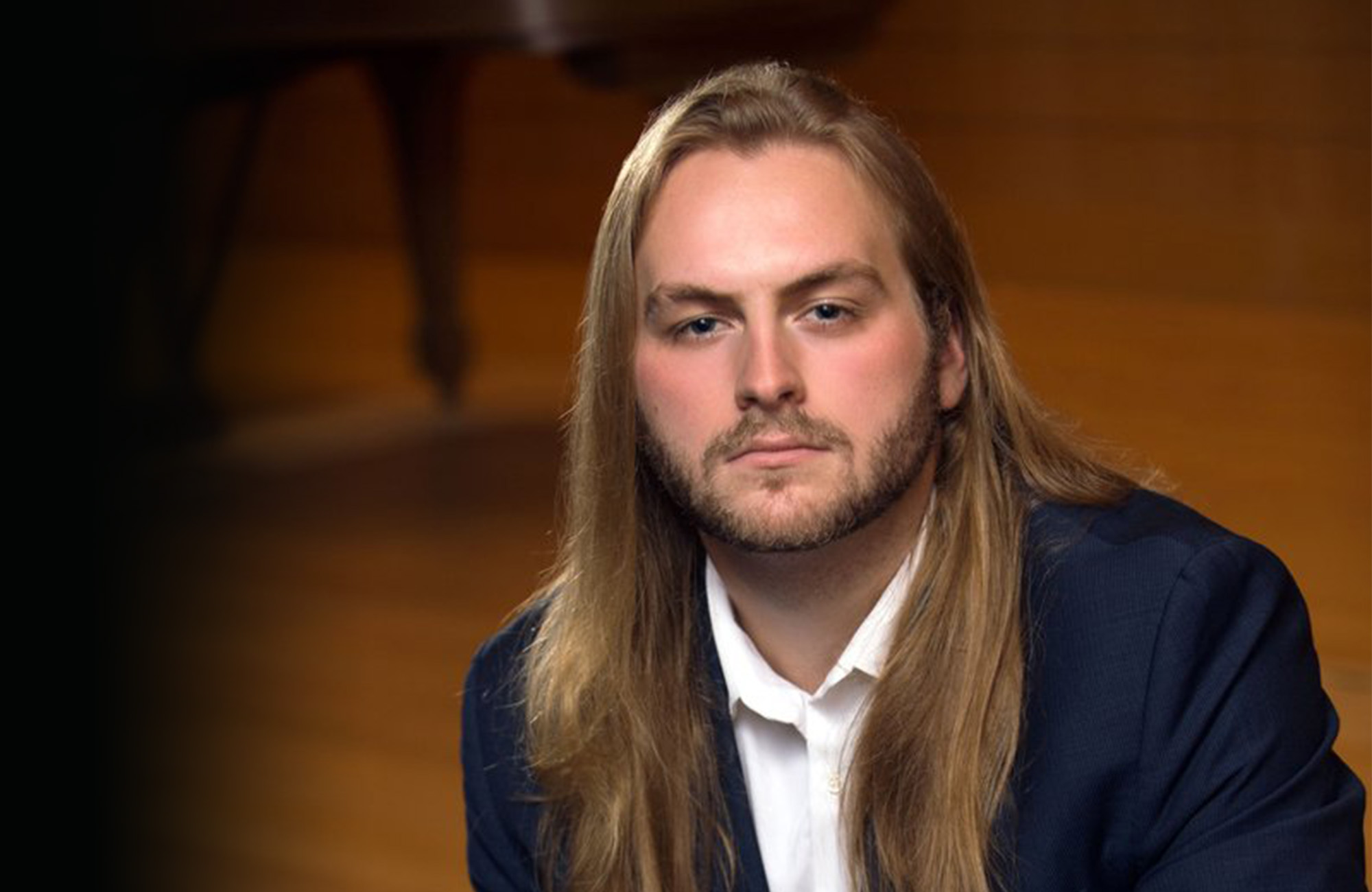
American Tenor Hayden Smith, known for his “burnished tenor (that) is blessed with technique and glorious phrasing” (HoustonPress), is making his mark on the bel canto, contemporary, and early music repertoire with unique interpretations and daring vocal pyrotechnics. In the 2023-2024 season, Mr. Smith portrayed the title roles in ...
American Tenor Hayden Smith, known for his “burnished tenor (that) is blessed with technique and glorious phrasing” (HoustonPress), is making his mark on the bel canto, contemporary, and early music repertoire with unique interpretations and daring vocal pyrotechnics. In the 2023-2024 season, Mr. Smith portrayed the title roles in Sid the Serpent Who Wanted to Sing and Grétry’s Beauty and the Beast with OPERA Iowa. Additionally, he joined MidAmerica Productions at Carnegie Hall as the tenor soloist in Haydn’s Lord Nelson Mass. This summer, he joins the esteemed Apprentice Artist program at Des Moines Metro Opera, covering Count Almaviva in The Barber of Seville and singing Mr. Sparhawk in the world premiere of American Apollo. The previous summer, he was a Young Artist with Glimmerglass Festival where he sang Tybalt in a new production of Gounod’s Romeo et Juliette and portrayed Frank in the world premiere of Morris and Fuentes’s The Rip Van Winkles.
Championed for his work across leading young artist programs in the country, Mr. Smith joined Wolf Trap Opera for three consecutive summers as a Studio Artist. While there, he portrayed Elder Hayes in Susannah, Giuseppe in La Traviata, and covered Le Prince Charmant in Viardot’s Cendrillon and Colin in L’amant anonyme. As a Vocal Fellow with Music Academy of the West in 2019, he sang both Junior and Charlie in Cold Mountain. That same year, he joined Houston Grand Opera’s Young Artist Vocal Academy as a Young Artist, and in 2018, he was a Young Artist with the Chautauqua Institute Voice Program.
Making a home in Houston’s vibrant classical community, Mr. Smith is a graduate of Rice University’s esteemed vocal program. While in the program, Mr. Smith starred as Don Ottavio in 2022’s Don Giovanni and sang Arnalta in their production of L’incoronazione di Poppea. Joining Houston’s Opera in the Heights, he made his company debut as Nemorino in L’elisir d’amore in 2022, a role he debuted with Temple University Opera in 2019.
A frequent winner in the competition circuit, he was a 2023 Houston District winner in the Metropolitan Opera Laffont Competition and an Encouragement Award winner in the New Orleans District in 2022. He received the prestigious Carolyn Bailey Argento Fellowship through the National Opera Association in the 2022-2023 season and was the 1st Place winner of the NATS TBB Upper College Division in 2021.
Mr. Smith completed his Bachelor of Music in Vocal Performance at Temple University and a Master of Music degree at Rice University.
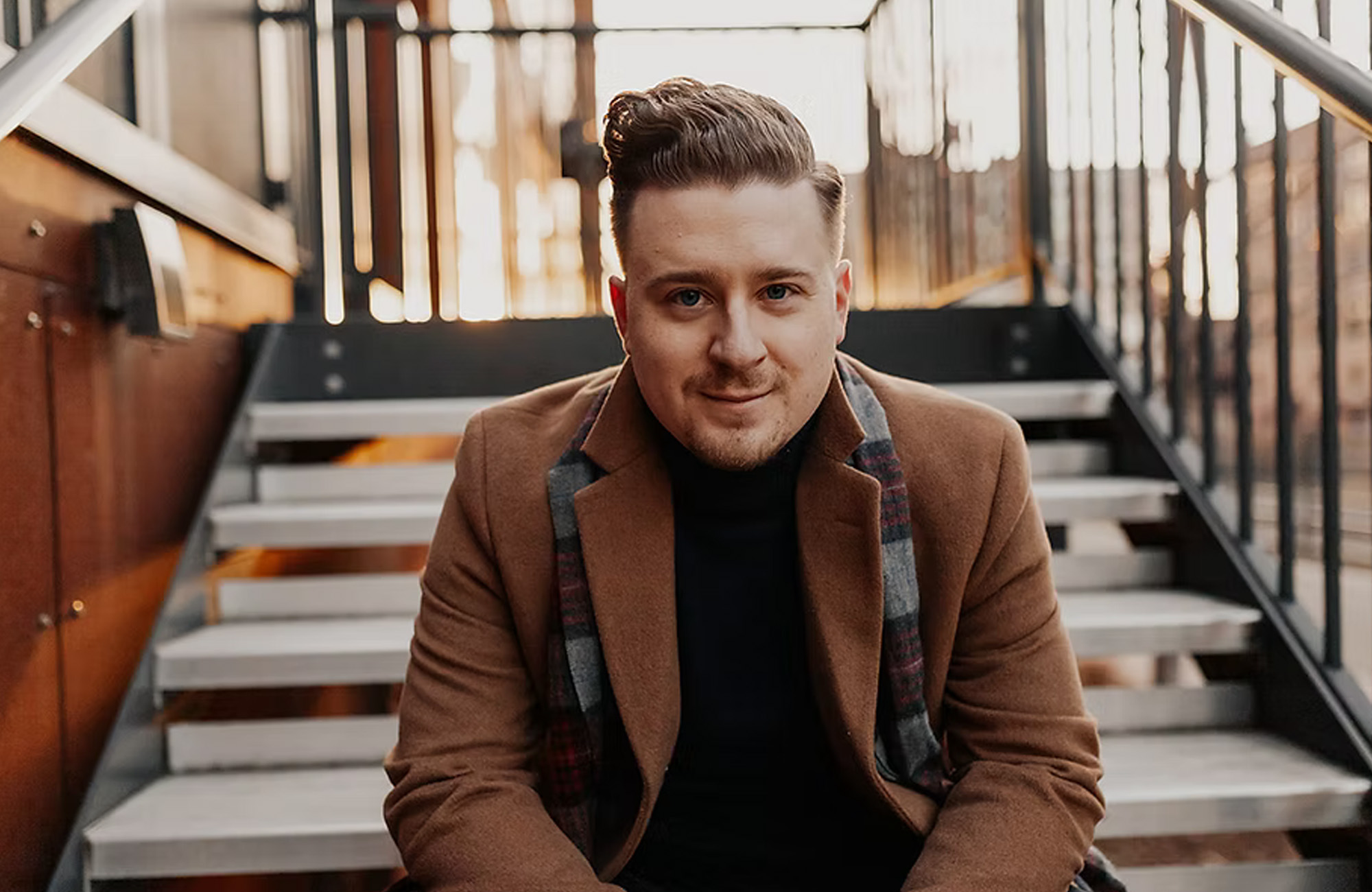
Possessing a “big, rich bass voice” that “brings chills” (MinnPost), bass Benjamin Sieverding has launched a promising career that touches upon more than three centuries of repertoire. He has gained notice for his “resonant, expressive bass” (StarTribune) and for a range of characterizations spanning from “wickedly charming” (l’étoile ...
Possessing a “big, rich bass voice” that “brings chills” (MinnPost), bass Benjamin Sieverding has launched a promising career that touches upon more than three centuries of repertoire. He has gained notice for his “resonant, expressive bass” (StarTribune) and for a range of characterizations spanning from “wickedly charming” (l’étoile magazine) to “genuinely threatening” (Phindie).
This season, Mr. Sieverding will perform the Jailer in Tosca and cover José Tripaldi in Ainadamar with the Metropolitan Opera. Mr. Sieverding made his debut with the Metropolitan Opera as Pit Singer – Bass 1 in Brett Dean’s Hamlet in 2022, and has since covered several roles with the company including Prison Guard 2 in Dead Man Walking, Tom in Un ballo in maschera, Boroff in Fedora, and Pistola in Falstaff.
Mr. Sieverding recently made his Edmonton Opera debut as Il Commendatore in Don Giovanni. He has leant his interpretation to several of Mozart’s bass roles: Sarastro in Die Zauberflöte (Northern Lights Music Festival, Lakes Area Music Festival, Minnesota Opera), Don Alfonso in Così fan tutte (Glacier Symphony, Opera in the Heights), Bartolo in Le nozze di Figaro (Madison Opera), Sprecher in Die Zauberflöte (Minnesota Opera), and a double role of Il Commendatore and Masetto in Don Giovanni (Skylark Opera Theatre).
Mr. Sieverding has performed frequently with Minnesota Opera. He most recently sang as a soloist in their preview concert and as Colline in La bohème. Roles with Minnesota include Bull/Neal and cover of Lucius/Witch in the workshop and world premiere of Prestini’s Edward Tulane, Alfred Austrian in the workshop and world premiere of The Fix, and Prison Warden George Benton in Dead Man Walking. As a young artist with Minnesota Opera, he performed Colline in La bohème, Laurent in Roméo et Juliette, the Sacristan in Tosca, Truffaldino in Ariadne auf Naxos, and cover of Vodnik in Rusalka.
Other roles from the operatic canon include Zuniga in Carmen (Glacier Symphony, Mill City Summer Opera, and Opera Colorado); Dr. Grenvil in La traviata and The Duke of Verona in Roméo et Juliette (Madison Opera); Betto and cover of Simone in Gianni Schicchi (Tulsa Opera), The Armchair and A Tree in L’enfant et les sortilèges (Pacific Symphony), Fifth Jew and the Cappadocian in Salome and Montano in Otello (Minnesota Orchestra), and Peter Quince in A Midsummer Night’s Dream (Lakes Area Music Festival). New and rare works include Mr. Noble in The Montana Mikado with Intermountain Bozeman Opera, the Dough’s Mate in Rachel Peters’ Companionship with Fort Worth Opera, Max Kane in the world premiere of Bolcom’s Dinner at Eight with Minnesota Opera, Frère Filandro in the modern premiere of Bernardo Pasquini’s 1672 opera Il Tirinto with Consortium Carissimi, and Detective Kearley/2nd Prison Warder in the world premiere of Theodore Morrison’s Oscar with Santa Fe Opera and Opera Philadelphia.
In concert, he has sung as the bass soloist in the Glagolitic Mass with the Brno Philharmonic; the Nunes Garcia Requiem at Carnegie Hall; excerpts from Mozart’s Requiem with Omaha Symphony; Handel’s Messiah with the South Dakota Symphony Orchestra, Orchestra Seattle and the Seattle Chamber Singers; Rossini’s Petite messe solennelle with the South Bend Chamber Singers; Haydn’s Mariazeller Mass with MidAmerica Productions at Carnegie Hall, and Janáček’s Glagolitic Mass with Madison Symphony Orchestra. He has performed Bernstein’s Songfest at LOFTrecital, the Biblical Songs by Antonin Dvořák with faculty and other alumni of the University of Michigan, and a solo recital with Opera South Dakota.
As an Apprentice Artist with Santa Fe Opera, Mr. Sieverding covered Herr Puff in Mozart’s The Impresario, the Chamberlain in Stravinsky’s Le rossignol, and the title role of Don Pasquale. As a Resident Artist with Opera Colorado, he performed Count Ceprano in Rigoletto.
Mr. Sieverding is a four-time Regional Finalist of the Metropolitan Opera National Council Auditions, Finalist in the Mary Trueman Vocal Arts Competition (Art Song Preservation Society of New York), and Winner of the Birmingham Musicale, Franco-American Vocal Academy Grand Concours de Chant, and Schubert Club Competitions. Mr. Sieverding completed his Post-Graduate Studies in Vocal Performance at the University of Michigan, where he also received his Master of Music. He received his Bachelor of Arts in Music from South Dakota State University


